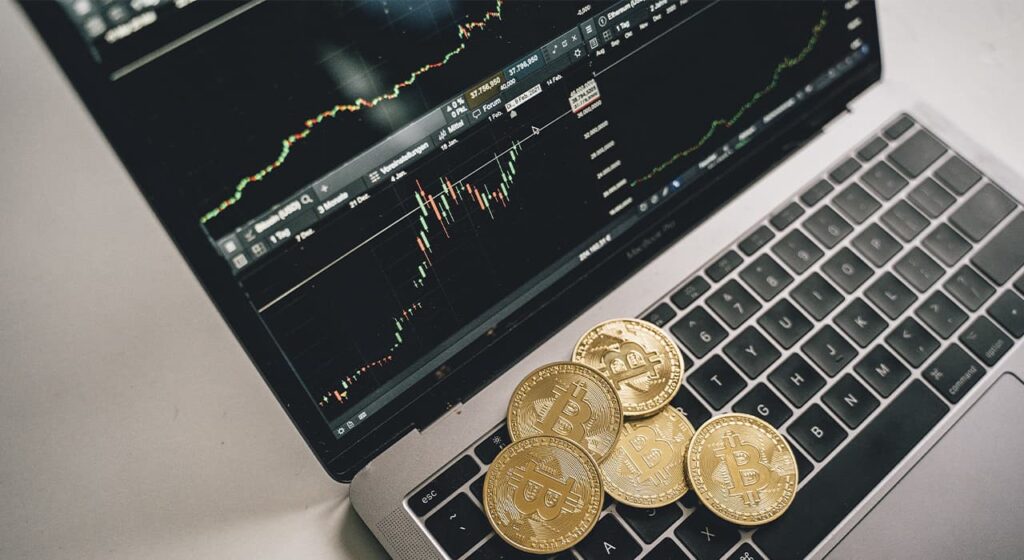Bitcoin is a decentralized system based on a software protocol and based on the principle of direct exchange between users.
All transactions in the bitcoin network are recorded in a distributed data registry, the blockchain, a copy of which is stored in a complete node connected to the bitcoin global network. The blockchain data is regularly verified using the Proof-of-Work consensus algorithm.
The bitcoin network uses the unit of the same name “bitcoin” (ticker BTC), the first and best known cryptocurrency, for its calculations. Since its creation, bitcoin remains the largest cryptocurrency by market capitalization.
Bitcoin operates without the involvement of any supervisory authority or central bank; coin issuance and transaction processing are done collectively by network participants. Thus, no one can control bitcoin, block or cancel a transaction. However, anyone can join the network, use it for transfers or develop the bitcoin code.
Bitcoin’s main innovation
Bitcoin was created as an open-source digital payment system. The main breakthrough and at the same time the value of this project is that for the first time it managed to create a self-sufficient, reliable and decentralized system for transfers.
Any bank or other similar financial institution is a centralized structure. The work of its operator, as a rule, is fully or partially closed from the users (customers). This leads to the need to trust their money. A centralized structure is vulnerable to errors, abuse and fraud.
Bitcoin does not have all these problems, because it is a decentralized structure that is built and maintained by its participants themselves without the central operator. All users’ balances are public (although specific identities are hidden), and the network protocol has mechanisms that regularly check that all data is correct.
The bitcoin network consists of nodes (nodes) – networked computers with special software installed on them. Each node stores and updates a copy of the bitcoin blockchain. The process of confirming transactions, creating new blocks and validating a single version of the blockchain is done using a consensus algorithm called Proof-of-Work.
The data of all transfers and balance states of all bitcoin addresses are stored in a decentralized registry, the blockchain. This is a database, which is a continuous chain of blocks, in each of which new transactions are recorded.
The role and importance of cryptocurrency
A key element of the traditional economy that the anonymous creator of bitcoin wanted to fix was money. In today’s world, national currencies, or fiat money, are printed by states. They are also a centralized structure with known shortcomings. First of all, the value of money is determined by the actions and credibility of the issuer. In addition, fiat money is subject to constant inflation, that is, depreciation.
That is why bitcoin blockchain does not use fiat money for transfers, but a special unit of account – cryptocurrency. Its main function is to serve as a means of transferring value in the bitcoin network. This value can be calculated in any convenient form, for example, in the same national currency, hence the bitcoin price is formed. The value of the first cryptocurrency, again, is determined not by the central bank or any one organization, but by users and investors in the open market.
Thus, the price of bitcoin is not determined by the state, the central bank or any one entity, but only by the coin holders themselves. Some researchers have also suggested that bitcoin’s intrinsic value should be determined.
It is important to note: Bitcoin was only originally conceived as a replacement for fiat money. Although the first cryptocurrency is used for payments, today many people perceive bitcoin more as a valuable investment asset.
How to “open an account” in bitcoin and make transfers
Joining a project called bitcoin is even easier than becoming a bank customer. First, you need to download and set up a wallet – a special program that allows you to create an address in the bitcoin network, as well as to make transactions, that is, receive coins or send them to other addresses.
To create and manage a bitcoin blockchain address, there is no need to go through the cumbersome and time-consuming identity verification associated with uploading personal documents. Address creation is just a few clicks away in the wallet interface.
A bitcoin address is analogous to a universal bank account. As the protocol has evolved, several new address formats have emerged in the bitcoin blockchain. Almost all of them, with a few exceptions, are fully compatible with each other. Choosing a more modern format can save you money on transactions.



